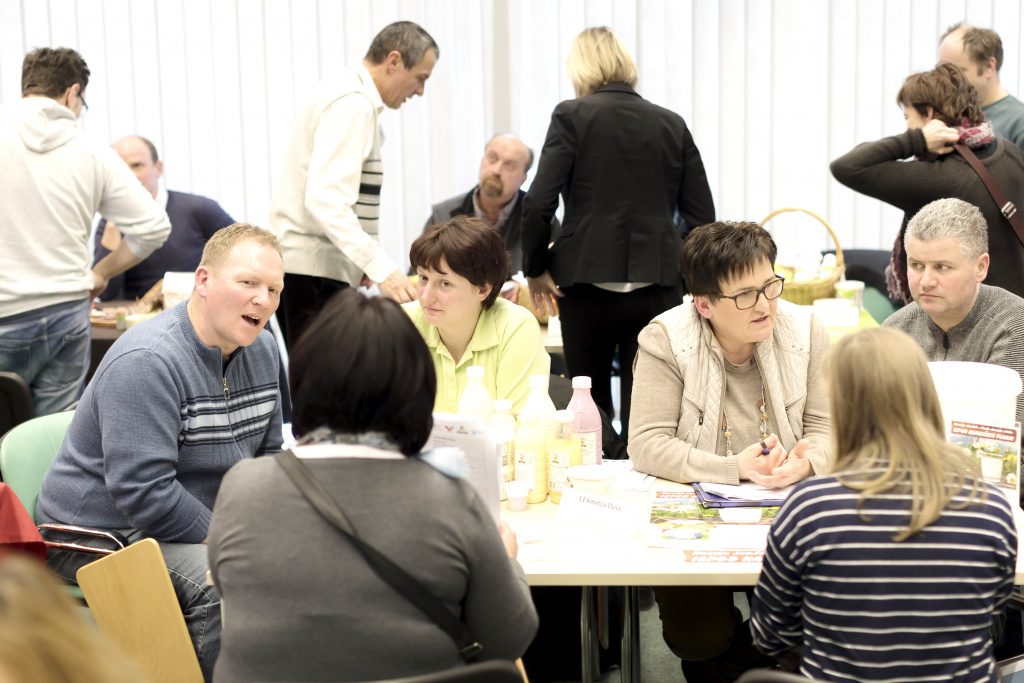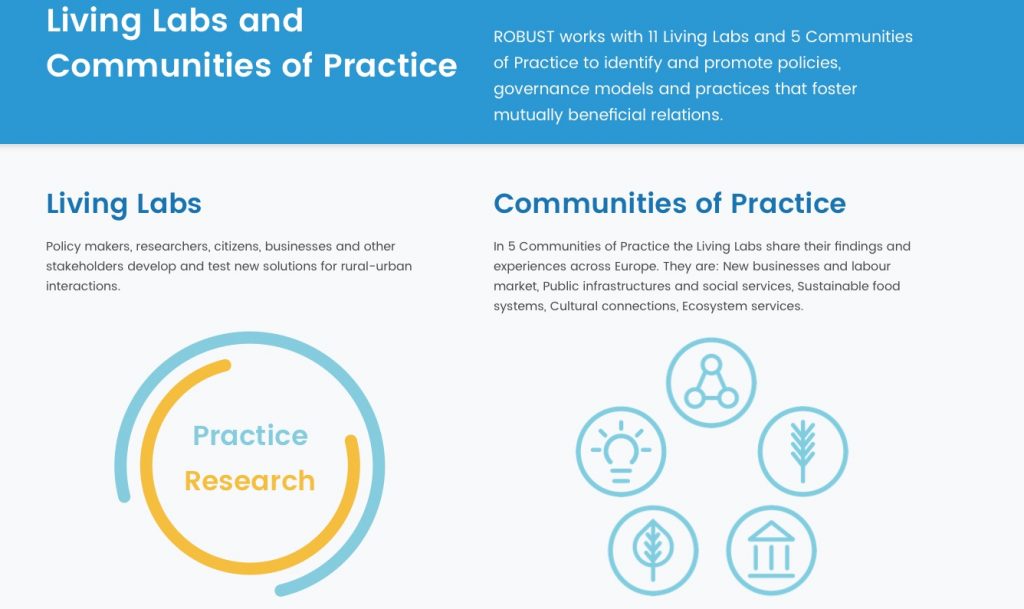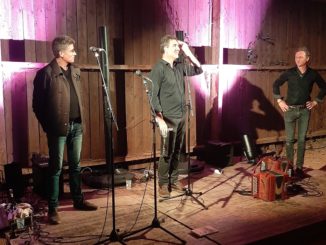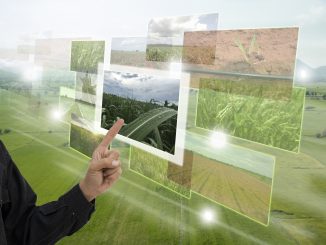
By Marina Kobzeva, Karlheinz Knickel
Living Labs are to bridge the gap between academia and ‘real-world’ practice. They are meant to provide space for exchanges, and to facilitate the creative cooperation between a diverse group of actors seeking solutions to the challenges of a particular locality, solutions “that work”. Being a platform for such interaction, Living Labs bring together people who would not normally cooperate on matters of science and innovation; Living Labs also foster true engagement with different perspectives and conflicting interests.
“Empowering the users of research results”, “balancing of a bigger theoretical picture with practical considerations” and “facilitating co-learning” – this is how research and practice partners in Rural-Urban Europe: Unlocking Synergies (ROBUST), an on-going EU funded project, see the way of working in a so-called Living Lab.
Common language and shared perspectives matter. Daniel Keech from the University of Gloucestershire, a research partner in ROBUST, refers to the opaque language or phrases that academics routinely use. He stresses that using language that is understood by everyone can put the walls down and reinforce mutual engagement:
“For successful collaboration to happen, everyone needs to be on the same page about what is being discussed and ‘feel’ the common ground”.
Thomas Hartmanshenn, Head of the Environmental Office of Frankfurt am Main, in turn emphasises that grassroots initiatives and ideas that are developed at local or municipal level can easily be missed if researchers focus on the “known” and “easily accessible” when reviewing studies, plans and data.
While Living Labs have already been around for many years, the increased funding from the European Commission as well as national research funders for so-called multi-actor projects is what really has encouraged their more widespread use in Europe. Multi-actor means that it is not anymore researchers alone who “know” and who can develop innovations. Instead, it is the strong interplay with practice partners and decision-makers from public and private sectors in interactive research approaches that leads much more directly to results that are actually implemented (see Zardo et al., 2016).
Šūmane et al. (2018) stress the importance of meaningful engagement of non-research actors in a Living Lab for a better co-creation arguing that researchers need to respect the knowledge of non-research actors and aim to complement it. Han Wiskerke, the scientific coordinator of ROBUST from Wageningen University, supports this point highlighting that “Living Labs are not limited to consortium partners but involve many different actors, such as entrepreneurs, citizens, NGOs, teachers, cooks and artists, with whom we will collaborate in different ways, and whose practices and ideas will also shape the (research) activities in a Living Lab”.
With Living Labs as a central element of ROBUST, researchers and practice partners were collaboratively identifying the challenges and questions they wanted to address. And they jointly designed the basic research framework, thereby ensuring its relevance for everyone involved.
To illustrate what such collaboration means in practice, we interviewed representatives from the eleven Living Labs in the project. What we found is that those interviewed acknowledge “the cutting-edge value” of their partnership across sectoral, institutional and cultural boundaries. They believe that this form of collaboration can produce tangible results, be it “improved public service for citizens” in Gloucestershire, UK; “concrete opportunities for local farmers almost going out of business” in Ede, the Netherlands; or “a more forward-looking land use planning process” for the Frankfurt Rhine-Main region, Germany.
Generally, partners anticipated more societally desirable research outcomes. Daniel Keech also sees Living Labs as an opportunity to train young academics to better deal with increasingly complex challenges and to become “generalists who can get on well with a range of people to solve problems”.
We think that the few examples show that the main benefit of working in Living Labs lies in sharing different kinds of knowledge and experiences that can contribute to upscaling and multiplying of best practices. Simultaneously, researchers can gain a better understanding of the complexity of real-life decision-making processes and of the limitations of some analytical approaches and tools.
Read the full version of this article
For more on the ROBUST project
[1] Šūmane, S., I. Kunda, K. Knickel, A. Strauss, I. De Los Rios (2018) Local and farmers’ knowledge matters! How integrating informal and formal knowledge enhances sustainable and resilient agriculture. Journal of Rural Studies, Vol. 59, April 2018, 232-241
[2] Zardo P., Barnett A.G., Suzor N., Cahill T. (2018) Does Engagement Predict Research Use? An Analysis of the Conversation Annual Survey 2016. PLOS ONE 13(2), e0192290. http://journals.plos.org/plosone/article?id=10.1371/journal.pone.0192290#sec018 accessed on 20.04.2018.






